8 /10 1 Votes
Initial release date 29 August 2002 Series Infinity | 4/5 Fuwanovel Artist(s) Yuu Takigawa Mode(s) Single-player Genre Visual novel | |||||||||||||||||||||||||||||||||
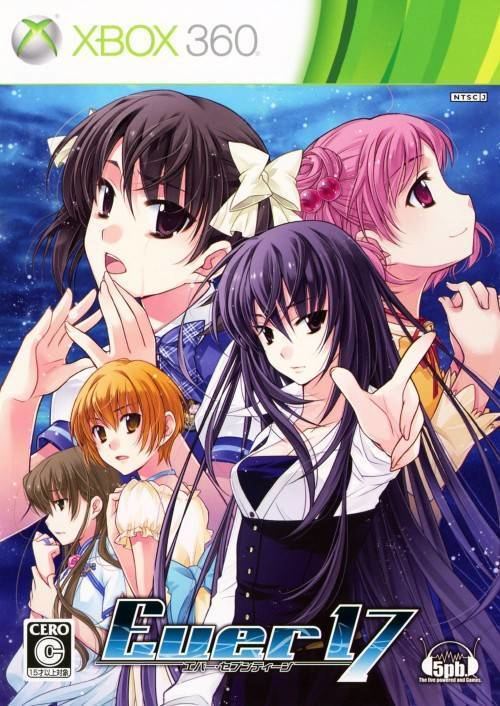 | ||||||||||||||||||||||||||||||||||
Release date(s) August 29, 2002PlayStation 2, DreamcastJP: August 29, 2002Microsoft WindowsJP: May 16, 2003NA: December 20, 2005PlayStation PortableJP: March 12, 2009Xbox 360JP: December 1, 2011Android, iOSJP: January 15, 2013 Similar Infinity games, 5pb games, Visual novel games | ||||||||||||||||||||||||||||||||||
Ever 17 the out of infinity opening
Ever 17: The Out of Infinity is a visual novel video game developed by KID. It is the second entry in the Infinity series; it is preceded by Never 7: The End of Infinity, and followed by Remember 11: The Age of Infinity, 12Riven: The Psi-Climinal of Integral, and Code_18. It was originally released in Japan on August 29, 2002 for the PlayStation 2 and Dreamcast, and was later ported to Microsoft Windows, PlayStation Portable, Android, and iOS. A localization of the Microsoft Windows version was released by Hirameki International in North America in 2005.
Contents
- Ever 17 the out of infinity opening
- Ever 17 the out of infinity review pc
- Gameplay
- Setting and characters
- Story
- Development
- Remake
- Release
- Reception
- References

The game follows Takeshi Kuranari and a boy with amnesia who is referred to as "the Kid", who are trapped inside an underwater theme park together with a group of other people after a leak has flooded parts of the park; they cannot contact people on the surface, and due to high water pressure, the park is estimated to implode after 119 hours. The gameplay consists of the player reading the game's story, at certain points making choices that affect its direction, leading to one of several possible endings.
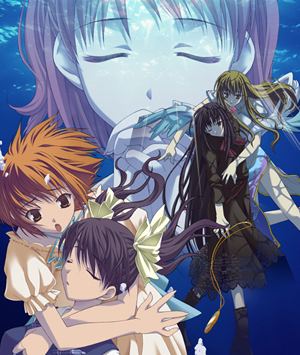
The development team included director Takumi Nakazawa, writer and planner Kotaro Uchikoshi, character designer Yuu Takigawa, and composer Takeshi Abo. Because the science fiction aspects of Never 7 had been positively received, Ever 17 was made with a larger focus on science fiction. A remake, simply titled Ever 17, was developed by 5pb. and Cyberfront for Xbox 360 in 2011, with the original's 2D sprites replaced by 3D models; this change was done as 3D models were seen as being easier to animate. The game has been positively received, with reviewers calling it one of the best in its genre, citing its story, characters, music, and graphics.

Ever 17 the out of infinity review pc
Gameplay
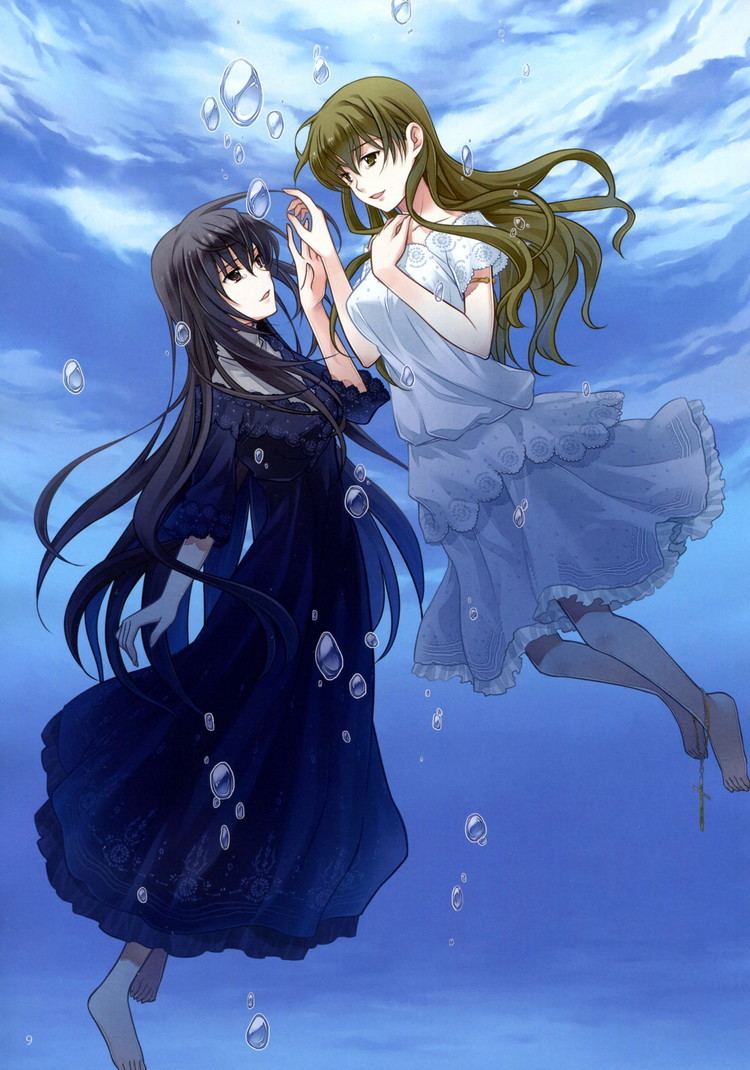
Ever 17 is a visual novel in which the player reads the game's story. At certain points, they get to make a choice, which affects the direction of the story, leading to eleven possible different endings. The whole plot is not revealed in just one ending; instead, the player has to play through the game multiple times, with each playthrough revealing new information. After playing through the game once, the player is able to fast-forward past text to decision points; they can also choose to start from a point further into the game, so that they do not have to go back to the beginning of the game for each playthrough.
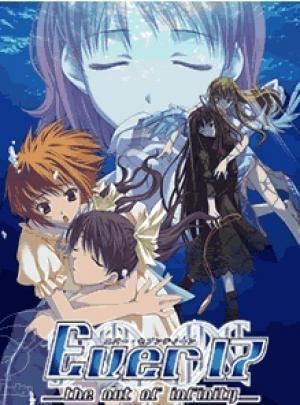
The game has two player characters: Takeshi Kuranari (倉成 武, Kuranari Takeshi) and the Kid (少年, Shōnen). Depending on the character the player plays as, they get to build relationships with different characters: for instance, the player can become close to Tsugumi Komachi (小町 つぐみ, Komachi Tsugumi) when playing as Takeshi, who just is a supporting character when playing as the Kid. The player character is not chosen directly; instead, a decision the player makes during a blackout in the beginning of the game determines who they will play as.
Setting and characters
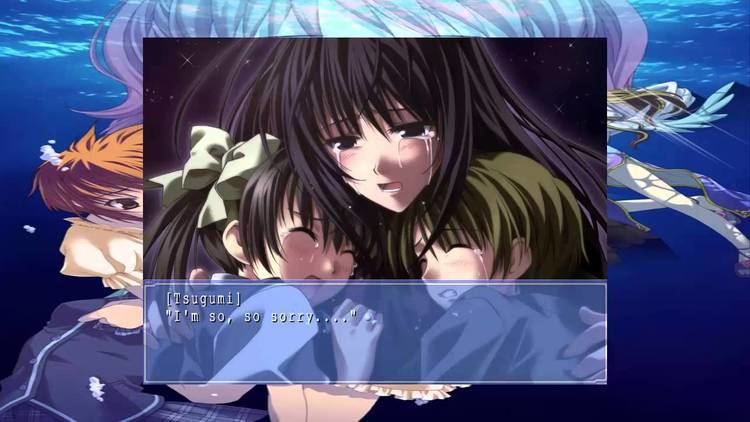
Ever 17 is set in Japan, in the underwater marine theme park LeMU, 51 meters below the surface of the artificial island Insel Null. After an incident, almost half of LeMU is flooded, and the path to the surface and the communication lines are cut off, trapping the game's characters inside. In addition, LeMU is under large water pressure, limiting time to find a means of escape to 119 hours.
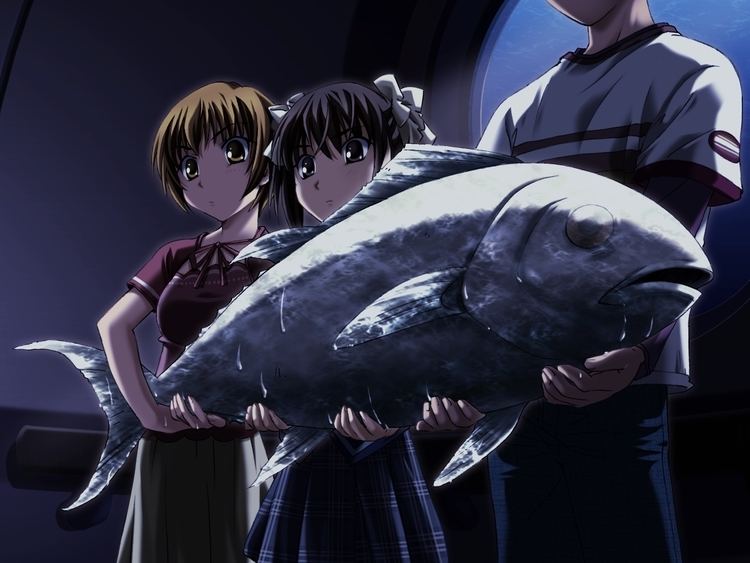
The player takes the roles of two characters, and sees the story from their respective perspectives: Takeshi Kuranari (倉成 武, Kuranari Takeshi), a student who visited the park with his friends but got separated from them; and an amnesiac boy who does not remember his own name, and is simply called "the Kid" (少年, Shōnen). Among other characters are You Tanaka (田中 優, Tanaka Yū), a part-time employee at LeMU; Tsugumi Komachi (小町つぐみ, Komachi Tsugumi), a woman who is distrustful of the others; Sora Akanegasaki (茜ヶ崎 空, Akanegasaki Sora), an artificial intelligence and the computer engineer of LeMU, who is only seen through a projection onto the other characters' eyes; Sara Matsunaga (松永 沙羅, Matsunaga Sara), a second-year student and a hacker; and Coco Yagami (八神 ココ, Yagami Koko), a girl who is stranded on LeMU with her dog Pipi.
Story
The game opens on May 1, 2017, when a blackout occurs in LeMU, its communications system go down, and the park springs a leak; portions of it get flooded, blocking the exit and trapping the characters inside. Due to water pressure, the park is estimated to implode after 119 hours; the water pressure also ensures that the characters cannot escape by swimming, as it would crush their lungs. If the player plays as Takeshi, he builds a relationship with Tsugumi, who reveals that she and her pet hamster Chami are carriers of the Cure virus, which has rewritten their genetic code, and halted their biological aging. She and Takeshi have sex, and she is impregnated. Later, Coco becomes sick. It is revealed that a research facility exists under LeMU, called IBF, and that LeMU was created by the Leiblich Pharmaceutical company as a cover for IBF. The facility developed the deadly virus Tief Blau; the LeMU disaster was caused when IBF lost containment of it. Coco was exposed to the virus while visiting her father, an IBF researcher.
The group goes to IBF in search for a cure, but starts showing signs of Tief Blau. An exception is Tsugumi, as the Cure virus has made her immune; the group injects themselves with her antibodies. They get contact with the surface, and a rescue pod is sent down, but is only able to stay for a short period of time. Tsugumi disappears to find Chami, who has gone missing; Takeshi chases after her, and saves Sora's data onto a disk, to save her memories. Returning to IBF, they have missed the rescue vessel. They find a submarine and escape, but its batteries die; Takeshi exits it, giving it enough buoyancy to save Tsugumi, while he dies on the ocean floor. Coco dies in IBF, as she had been looking for Pipi, and the rescue team could not find her.
If the player plays as the Kid, Sara is trapped in LeMU instead of Coco; the Kid frequently has visions of Coco, but no one else sees her. The group manages to contact the surface, and open and close doors to various rooms in LeMU to move the water around, allowing them to escape. After having played the game as both Takeshi and the Kid, the player accesses the final route, in which it is revealed that while the events Takeshi experienced took place in 2017, those the Kid experienced were a recreation, and took place in a rebuilt LeMU in 2034. The You of 2017, whose full first name is Yubiseiharukana (優美清春香菜, Yūbiseiharukana), had artificially impregnated herself and given birth to Yubiseiakikana (優美清秋香菜, Yūbiseiakikana), who took the role of You during the recreation. Pipi had escaped LeMU in 2017, carrying with it the disk with Sora's memories and footage of Coco being trapped in IBF. Sara and the Kid are revealed to be Tsugumi and Takeshi's children, and the Kid's real name turns out to be Hokuto (ホクト). The Kid of 2017, whose name is Ryogo Kaburaki (桑古木涼権, Kaburaki Ryōgo), played the role of Takeshi during the recreation, having stopped aging due to the Cure virus.
The recreation was done to line up two points in the fourth dimension, time, to get the attention of the person playing Ever 17; the characters see the player as a 4th-dimensional being, "Blick Winkel", who can move through time; Blick Winkel appearing was what caused Hokuto's amnesia. Yubiseiharukana tells Blick Winkel that they had told her to do the recreation to save Takeshi and Coco. Blick Winkel travels to 2017, and wakes up Takeshi on the seafloor, forcing him to swim to IBF; inside, he injects Coco with Tsugumi's antibodies. Blick Winkel warns Yubiseiharukana in 2017 to not save Takeshi and Coco immediately, to avoid a time paradox; instead, Blick Winkel has Takeshi and Coco enter cryogenic suspension in IBF. They wake up in 2034, saved. Sora, who now has a robotic body, is given back her memories from the disk, and Yubiseiharukana leaks information about Leiblich, exposing them as the ones behind the Tief Blau outbreak.
Development
The game was directed by Takumi Nakazawa, while Kotaro Uchikoshi was the planner and scenario writer, and Yuu Takigawa was the character designer. While the previous game in the series, Never 7: The End of Infinity, focused on romance with light usage of science fiction themes, the use of these two themes was more balanced in Ever 17; the decision to do this was made after the science fiction themes in Never 7 were well received by critics. The game's setting of "you're trapped somewhere and trying to escape" was made to embody two of humanity's instinctive desires: the unconscious desire to return to the safety of one's mother's womb and shut oneself away from the world, and the desire to escape from and overcome one's current condition. While Never 7 had originally been planned as a stand-alone game, it was decided during the development of Ever 17 to connect the two games' worlds. Development of the game was finished in May 2002.
The game's soundtrack was composed by Takeshi Abo, and features "geometric music" because of the game's theoretical and science fiction elements. Prior to composing the music, he read through the game's story, to understand the setting and each character's personality as much as possible. He would write his impressions of the plot, with a focus on the "emotional flow" and the events that occur throughout the story; he valued his first impressions as very important for this. According to Abo, this method takes longer time, but allows him to make better music with a stronger relation to the game's world than if he had just designated different songs to different points of the game. Because he enjoyed the story, the music strongly reflects Abo's own musical tastes. Asami Imai performed the opening theme for the PlayStation Portable version of the game.
Remake
A remake of the game, simply titled Ever 17, was developed for Xbox 360 by 5pb. in collaboration with Cyberfront; this version was redone from the ground up, and includes new event graphics, re-recorded voices, new routes, and a new ending. It uses 3D models for the conversation scenes; this move from 2D to 3D was made as 3D character models were seen as easier to animate than 2D sprites, as they can be posed without the need to draw new poses manually. The setting was redesigned, with newly added facilities, and Tsugumi was given redesigned clothes.
5pb.'s executive director, Chiyomaru Shikura, felt that visual novels are above manga but below anime as a media genre, and said that, with the move to 3D, the genre would gradually catch up to anime. He said that while the Xbox 360 market was not strong in Japan, he felt that Japanese Xbox 360 users were people who liked video games a lot, and who had the ability to increase their community; he believed word-of-mouth to be an important aspect of the Japanese Xbox 360 market. The remake's theme song was performed by Kokomi of the band Asriel.
Release
Ever 17 was originally released for Dreamcast and PlayStation 2 on August 29, 2002 in Japan. A Microsoft Windows version was released on May 16, 2003, in Japan, and was localized and released by Hirameki International on December 20, 2005, in North America. The game was also released for PlayStation Portable on March 12, 2009, and for Android and iOS on January 15, 2013. The PlayStation Portable version of the game was the 744th best selling game of 2009 in Japan, with 7,482 copies sold. The Xbox 360 remake was originally planned to be released on July 28, 2011, but was delayed to December 1, 2011. It was made available in both a standard edition and a limited edition, the latter including a 2-disc soundtrack.
Other media based on the game has been published. A music album with the game's soundtrack, titled Ever 17: The Out of Infinity - Sound Collection, was released by Scitron on September 4, 2002. Scitron released another album, Ever 17: The Out of Infinity - Vocal Collection, on August 6, 2003, which collects singles previously released during a two-year period. The album includes two vocal tracks from the game, instrumental versions of them, and songs based on the events and characters of the game. A drama CD titled 2035 was released on December 18, 2002, also by Scitron. A manga adaptation of the game was drawn by Chigusa Umetani and released by Enterbrain on their Famitsu Comic Clear website from 2011 to 2012; it has since been collected in two volumes. A book, titled Ever 17 10th Anniversary Fanbook, was released at 2012's winter edition of Comiket, and included new art by Takigawa.
Reception
Neal Chandran at RPGFan called Ever 17 "a fantastic adventure game", and one of the best Japanese games in the genre that are available in English, describing it as a "must-play". He liked the game's writing, finding the conversations with other characters to be deep, philosophical, and intellectual, and said that each character was interesting. He found the conversations to reading "like conversation should", but also found the English localization to contain multiple flaws, including spelling mistakes and grammatical errors, such as the misuse of the words "your" and "you're". Jason Young at GameZone called the game an "all-age masterpiece [that] is nearly flawless in every regard", and said that it was the best visual novel that was available in English. He said that it was one of the video games with the best characterization in history, and called the game's plot twist "mind-blowing".
Writers for Famitsu thought that the combination of suspense and romance made for a strange feeling. They found the game system to be characteristic of KID, calling it user-friendly, and saying that it made repeated playthroughs pleasant. Chandran liked the game's graphics, saying that while they only consist on still 2D images on static backgrounds, the character designs were appealing and the backgrounds were bright and detailed. He called the game's sound "top notch", saying that the voice actors did an excellent job with their characters, and that the music was very good; he liked how it was varied, feeling that it represented the various scenarios and moods in the game well, and that it was a big improvement over the music in the previous game in the series.
In 2010, RPGFan ranked the game as the eighteenth best role-playing game of the 2000s, calling it "a pinnacle of visual novels", citing its story, which they called "one of the most emotionally charged, intense, deep, and compelling storylines ever seen in a video game", and the characters, which they said develop believably, ensuring that the player forms an emotional bond to at least one; they called the character of Tsugumi one of the best tragic heroines they had encountered in a game. Chandran ranked the game as the third best role-playing game from the sixth generation of video game consoles, saying that it was his favorite in the Infinity series, and one of his favorite video games overall.
